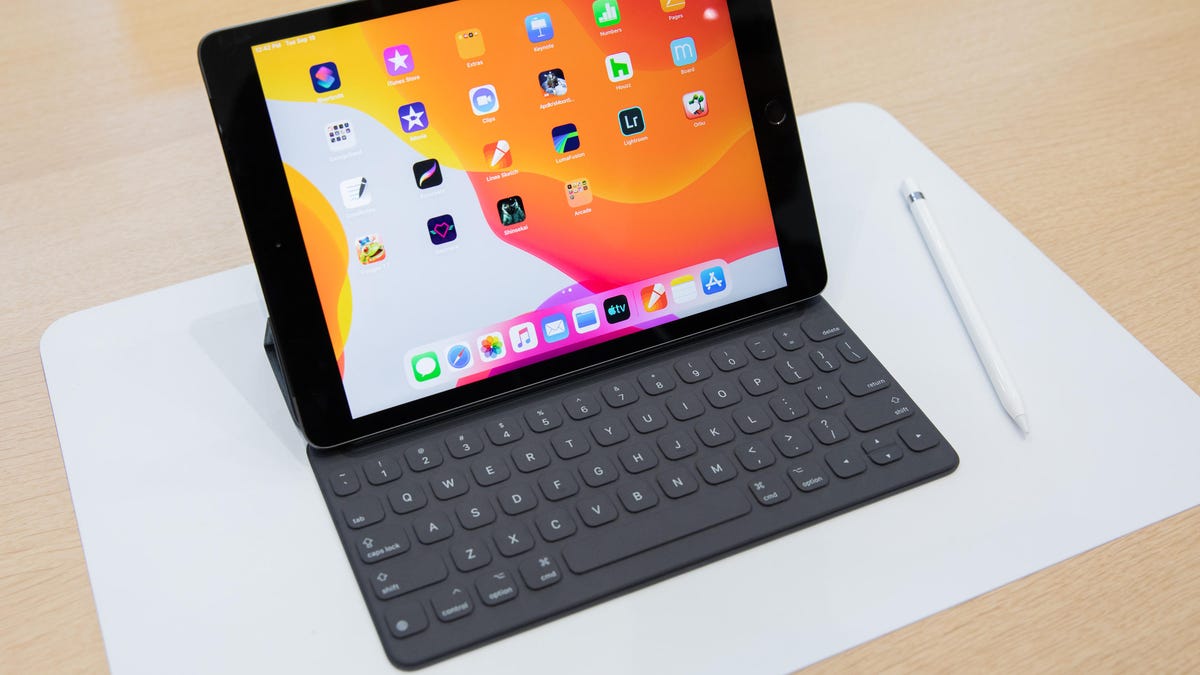iPadOS: 5 best new security and privacy features for your iPad
The new iPad software comes with new permission controls, Bluetooth permissions and Sign in with Apple.

Apple's new 10.2-inch iPad.
With Tuesday's release of Apple's iPadOS -- a dedicated operating system for the iPad, offering the tablets a suite of new features -- Apple not only helps position the iPad as a laptop competitor, but ups the ante on data security during a time of escalating mobile malware threats.
The new operating system, first announced at the company's Worldwide Developers Conference in June, is now available as a free software update for the iPad Air 2, the iPad Mini, all the iPad Pros, the 2017 iPad, the 2018 iPad and the iPad Mini 4.
Both iPadOS and iOS 13 (released Thursday) come with a host of new data-savvy security features offering more granular controls over how often apps can access your location, including ways to stop apps from scanning nearby Bluetooth and Wi-Fi networks to guess your address, and a new way to share your pictures online without sharing your private metadata. iPad users also have a new layer of privacy when they sign in to third-party apps.
Here are the iPadOS security features most worth your time.
Permission controls
Say goodbye to unknowingly letting apps perpetually snoop on your location by quietly slurping up GPS data. With both iPadOS and iOS 13, Apple places a check on those apps that request perpetual snooping permissions.
Now, when an app requests permission to access your location, you'll be offered three options: Allow location access while you're using the app, allow it once or don't allow it at all. If you pick Allow Once, Apple will check with you again the next time you open the app.
The Location Services menu in the Privacy section of the iPadOS Settings app has also changed into a hub where you can view the full list of all your apps' privacy settings, and revoke or change permissions for any of them.
Picture perks
One handy perk of the new suite of geodata controls is tucked into your photo controls, where you now have the option of sharing pictures without sharing your location data. Stripping private geodata from a photo while still in the Photos app also means each picture no longer leaves a data trail when it makes its way across social media, email or messages -- and the photo can still be geotagged privately.
How to do it? Easy. Select the picture you want to share in the Photos app, tap on Options at the top of the screen and then turn off Location under the section labeled Include.
Bluetooth snoops, begone
Just because you've turned off permissions for an app to access your location via GPS doesn't mean your location data is 100% safe. That app can still start sniffing around for Bluetooth and Wi-Fi signals via a separate permission set. Once the app finds them, it can quickly parse your general location.
Bluetooth is steadily becoming more of a security vulnerability, as smart home connections outpace security fixes. A new option in iPadOS closes a lesser-known security loophole for most users by allowing you to control which apps are allowed to search for Wi-Fi and Bluetooth signals.
Sign in with Apple
iPadOS' mandatory privacy tool, Sign in with Apple, goes a long way to help Apple hang on to its reputation for data privacy. The security feature uses your Apple ID, not your email address or social media logins, to verify your credentials while logging into your apps, with the goal of keeping you from being tracked online.
Want to try out a new app or take a suspicious-looking online quiz? Forget logging in with your Facebook credentials or creating fake email addresses. Sign in with Apple will create a throwaway email address for you via its Hide My Email function, and spare your inbox the spam onslaught. Using Sign in with Apple also means your Apple ID is protected with two-factor authentication, one of the best ways to tighten up security.
HomeKit upgrades
Now that Apple's smart home platform is gaining support for secure routers and encrypted home-security cameras, iPadOS' expanded HomeKit security features will come in handy for tighter management of real-world security.
On the surface level, that means you'll now be able to decide whether your smart lights can talk to your smart thermostat. But on a deeper level, it means you'll have more granular control over the flow of data through your house. Does your home security system really need to talk to your wireless printer? Or would you rather cordon it off for some extra privacy now that IoT attacks are getting progressively worse?
The crown jewel here for home video surveillance users is that HomeKit cameras will soon have encrypted video capabilities and iCloud storage, and all HomeKit Secure Video that gets uploaded will be encrypted. Now that video eavesdropping has come to the forefront for Apple users, the news comes not a moment too soon.

